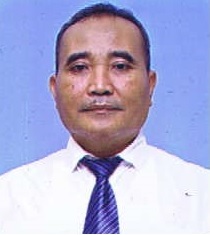Mochamad Nursalim
@unesa.ac.id
Guidance and Counseling, Educational Faculty
Universitas Negeri Surabaya
was born in Tuban 03 05 1968
EDUCATION
Psychology, Guidance and Counseling
RESEARCH INTERESTS
Counseling, School Refusal Behavior, Hypnotherapy
FUTURE PROJECTS
increasing student hardiness during learning from home
increasing student hardiness during learning from home
Applications Invited
Scopus Publications
Scholar Citations
Scholar h-index
Scholar i10-index
Scopus Publications
Mochamad Nursalim, Wulan Patria Saroinsong, Ima Widiyanah, Ricky Setiawan, Sherrin Nurlita Widya, Chinun Boonroungrut, and Brwa Aziz Sidiq
EDP Sciences
This study falls under the category of development research, with the goal of creating an international class guide model focused on sustainable development to raise students’ environmental consciousness. The management of foreign class activities in the Faculty of Education is not ideal and still facing challenges, according to the field. The challenges are as follows: 1) students’ limited awareness of the global warming issue; 2) ineffective English communication; 3) students’ inadequate preparation for participating in activity programs overseas; 4) the execution of international activities has not proceeded optimally; and 5) ineffective evaluation activities. R&D (research and development) is a research methodology that is used in this method to carry out product testing, development, and research based on needs analysis. This study findings indicate that 88.5% of the development results in the form of worldwide training recommendations that can be implemented internationally. The model elements, content suitability, constructs, language, practicality, and writing organization are all demonstrated by the results of a questionnaire given to experts and model users; the model, with an average score of 82.8%, is highly valid for use in the Faculty of Education at Universitas Negeri Surabaya.
Anselmus Yata Mones, Mochamad Nursalim, and Lamijan Hadi Susarno
Common Ground Research Networks
Suryanti*, Mochamad, Mochamad Nursalim, Nadia Lutfi, and Ivo Yuliana
Eurasian Society of Educational Research
<p style="text-align: justify;">The need for early comprehension of scientific concepts in elementary school students is crucial. However, studies have indicated that some students lack a fundamental understanding of such concepts, highlighting the importance of effective teaching methods to improve scientific literacy at an early age. Therefore, this study aimed to determine the ability of Project-Based Learning in Science, Technology, Engineering, Art, and Mathematics (STEAM-PjBL) to improve students' scientific literacy, knowledge, and application of foundational scientific principles. A quasi-experimental methodology was employed, involving 22 female and 26 male fourth-grade elementary school students as participants. The study administered a Scientific Literacy Test (SLT) treatment to the students, followed by unpaired and paired t-tests to examine the impact of the STEAM-PjBL model on their scientific literacy skills. The results showed that STEAM-PjBL improved students' scientific literacy skills significantly more than traditional instruction. The experimental group outperformed the control group in the post-test, indicating the effectiveness of STEAM-PjBL. Therefore, the study recommends the adoption of the STEAM-PjBL model by elementary school teachers to improve students' understanding of fundamental scientific concepts.</p>
Mochamad Nursalim, Wulan P. Saroinsong, Chinun Boonroungrut, Wagino, and Augusto da Costa
Wiley
Mochamad Nursalim, Bambang Dibyo Wiyono, Wiryo Nuryono, Diana Rahmasari, and Hermien Laksmiwati
Birlesik Dunya Yenilik Arastirma ve Yayincilik Merkezi
This study aimed to develop and test the acceptability and effectiveness of the psychoeducation model to decrease academic stress when learning from home (LFH). This research used a development research design, with two main objectives: developing the product and testing the effectiveness of the product. The instruments used were questionnaires on rating scales about aspects of product utility, feasibility, accuracy and also stress academic scale. Data analysis was carried out quantitatively and qualitatively. Quantitative data were analysed by descriptive statistical analysis, while qualitative data in the form of comments, suggestions and criticisms were analysed qualitatively. Based on the data analysis, it can be concluded that the psychoeducation model developed fulfils the acceptability criteria which includes utility, feasibility and accuracy. The developed psychoeducation model is effective in reducing academic stress among college students when LFH. 
 
 Keywords: development, psychoeducation model, academic stress, acceptability, effectiveness
Mochamad Nursalim and Triyono
IEEE
Natural disasters in Sigi and Donggala, Central Sulawesi, have caused Post Traumatic Stress Disorder (PTSD) in disaster victims. People who experience PTSD respond to traumatic events experienced with fear and despair, they will continue to remember the event and always try to avoid things that can remind them of that event. Starting from the problem was initiated a counseling that comprehensively is able to construct past events more positively and arouses the courage of the counselee to face the present and future reality more adaptively, the counseling called BESCB. The objective of this research is to study the efficacy of counseling of BESCB to reduce PTSD in victims of natural disasters. In this study used an experimental research design with pretest-posttest control group design. The subjects of this study were 45 victims of disasters in Palu and Donggala. The instrument used was Modified PTSD Symptom Scale (MPSS-SR) and Scaling Question. Techniques used to analyze the data is t-test. Based on the analysis and discussion of this research findings was concluded as BESCB Counseling Effective to reduce PTSD Symptoms and the existence of realistic changes in mind, calm feelings and low anxiety, and more adaptive in dealing with natural disasters.

